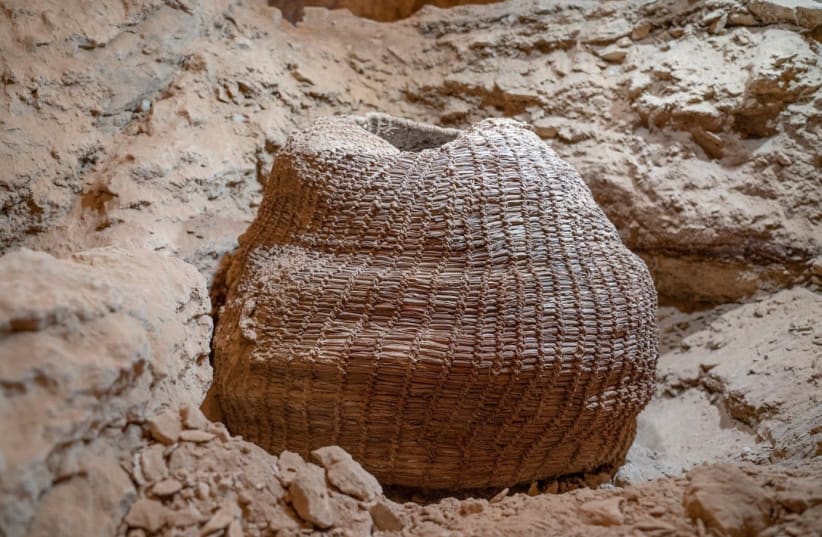A perfectly preserved large woven basket dating back some 10,500 years was unearthed in the Judean Desert, the Antiquities Authority announced Tuesday.
Experts believe the artifact is probably the oldest of its kind ever uncovered. It was excavated in a Judean Desert cave by the IAA in cooperation with the Civil Administration’s Archaeology Department.
“This is the most exciting discovery that I have encountered in my life,” Dr. Haim Cohen said during a press briefing at the IAA lab in Jerusalem.
Materials from four different parts of the basket were analyzed to date it. The researchers concluded that the object was manufactured around 10,500 years ago during the Pre-Pottery Neolithic period.
“The basket has a capacity of some 92 liters,” Cohen said. “We do not know yet which type of plant was used to make it, but we are looking into it. However, we can already say that two people wove it, and that one of them was left-handed.”
The basket was found empty and closed with a lid. Only a small amount of soil was retrieved in it, and the researchers hope it will help identify what the vessel contained.
According to Cohen, the ancient people who manufactured it probably did not live in the cave, but rather used it for storage.
The archaeologists found evidence that antiquities looters had probably arrived some 10 cm. from the artifact, but they stopped excavating just before reaching it.
The rescue operation aims at surveying hundreds of caves in the Judean Desert to trace and preserve the antiquities that are still hidden there before they are retrieved and sold on the private market, as has happened in the past.
“Organic materials usually do not have the ability to survive for such long periods,” Dr. Naama Sukenik from the IAA’s Organic Material Department told The Jerusalem Post. “However, the special climatic condition of the Judean Desert, its dry weather, have allowed for dozens of artifacts to last for centuries and millennia.”
Among other items, the archaeologists have found fragments of textiles still carrying their bright colors dating back to the Roman period, parts of sandals, a small comb with a 2,000-year-old lice stuck between its teeth, seeds and pieces of rope.
Dozens of scroll fragments from a biblical scroll dating back some 2,000 years were also unearthed in the first discovery of its kind in decades.
About half of the area still remains to be surveyed and shed further light into life in Israel over the course of millennia.
